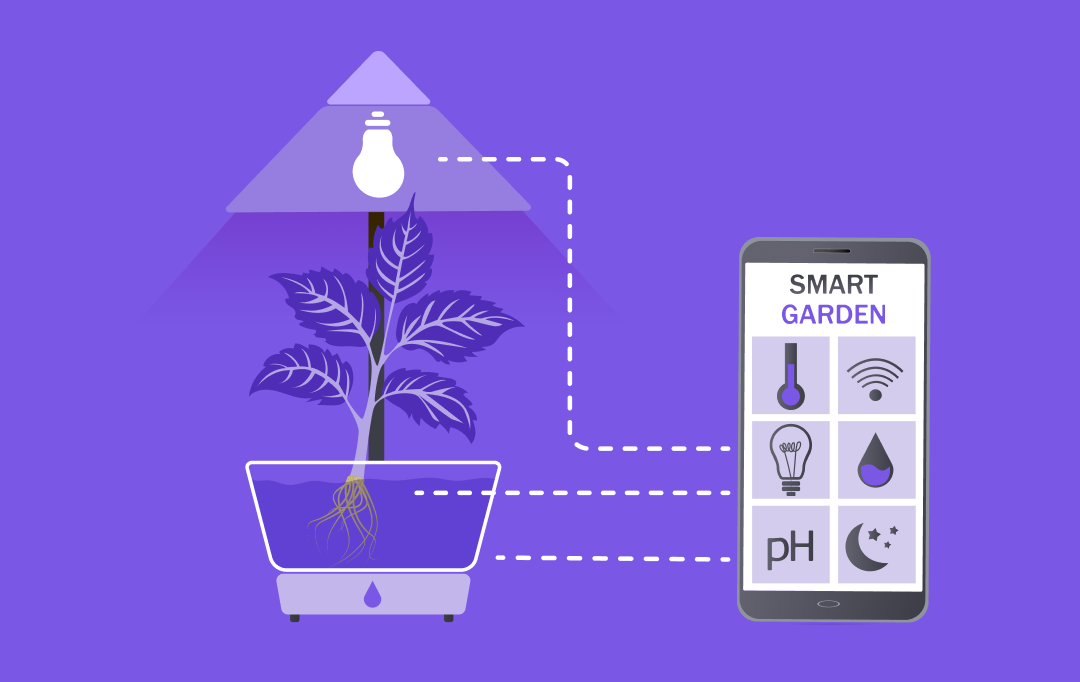- So What is QA Mobile App Testing?
- What are The Most Popular Mobile Application Testing Techniques?
- 1. Manual Testing
- 2. Automation Testing
- Which Mobile App Testing Plan Between The Two is Better?
- 1. Automation for Mobile App Testing
- 2. Manual Testing for Mobile Apps
- What Mobile App Testing Strategies are followed by the Leading Mobile App Testing Companies Like Appinventiv?
Less than 25% of mobile app users come back after day one and Only 4% of the customers who are upset about the app, actually complain.
Add this grim situation to the fact that only 29% of the mobile app developers do extensive testing and you will get a situation where while QA has become the need of the hour, it is still not been taken seriously.
QA testing is an unappreciated part of the mobile app development process and is usually blamed when somethings don’t work out. Mobile app testing is a crucial part and developers usually fail to see it. However, some of them often ask how to do mobile testing in a way it includes all the parts and we will talk about it in our blog today.
If the testing is not done right then there is no use of having an app that looks great. Why? Unless the functionality of the app is good the app is of no use. This is why it needs to be understood that mobile app testing is a significant part of the development process.
Most non-tech people don’t even know there is such a thing or job known as mobile application testing.
The thing is if the design is poor, people can still manage with it. But, if the app functionality is poor or developers have overlooked mobile app security best practices, no users will entertain the application. An evidence of which is that even the Top 10 apps in the Google Play Store are struggling with convincing users of their app security and prevent uninstallation.
Therefore, mobile app QA testing should be taken very seriously, after all, quality assurance process can make or break your mobile app.
In this blog, we will discuss the importance of testing mobile applications, types of mobile application testing and a lot more.
So What is QA Mobile App Testing?
QA stands for quality assurance and is a process where developers run multiple tests on the app to ensure its functionality and also find bugs if any. Usually, people assume QA testing just fixes bugs but it does a lot more than that:
- Tests and fixes any written errors or bugs.
- Finding defects in the UI/UX part.
- Ensures the requirements are met for the app.
- Makes sure there is a logic flow.
- It acts as a gatekeeper and lets the app developers in nyc do his work well.
Mobile app testing is as important as the entire development process. Skipping it entirely may be tempting but it may be the cause of your app’s failure.

Image Source: Statista.com
According to stats in the image above, 32% of apps fail because of less time allocated to testing. So, if you ask ‘Is it important to do mobile application testing?’, the answer is YES.
What most developers don’t know is that only 4% of the app users complain to the company about the defects in the app, others just simply uninstall and forget about it. So, if an app is buggy then there will be less to no users which makes the app a complete fail. The mobile testing concept does involve cost but it is totally worth it in the long run.
What are The Most Popular Mobile Application Testing Techniques?
There is one big debate when it comes to deciding which mobile app testing techniques to follow. There are basically two most popular mobile app testing approaches and we will see to it one by one.
1. Manual Testing
In manual testing, all the tests are done manually i.e. by a QA analyst. The tester has to test all the features of the app in order to discover any errors made during the software development process.
In the process, a tester will execute the mobile app test cases and once it’s done, they will create reports. Test cases for mobile application are certain conditions set by the tester to test the mobile app. All this will be done without any involvement of automation tools.
Manual testing is a time taking process given that it is done by humans. But this mobile app testing method also allows testers to perform exploratory tests which are not possible in automation testing.
Android app manual testing is considered the best as it allows more chances of catching bugs than it does in iOS app manual testing. The reason being iOS QA testing needs several tools to find errors which humans cannot possibly do best. It is also said that manual testing is not suitable for high volume regression but is comparatively cheaper than automation testing.
2. Automation Testing
In automation testing, coders have to write codes to execute the testing process. These codes allow the automation tools to execute the tests and finish it in a short period of time. The entire goal of automation testing is reducing the time of the test.
Automation testing for mobile apps is more effective in finding bugs and errors. Though the initial investment is high in this testing technique yet it gives better ROI in the long run. There are no to very fewer chances of mistakes with automation testing since it uses tools to find out errors in an app. Even the smallest error in the app is identified in automation testing.
Automation testing is preferred for iOS app testing by the QA testers. The tools this testing method provides makes it easy for the testers analyse the codes in iOS apps and identify them in no time.
[Also Read: How Much Does It Cost to Develop a Penetration Testing Tool Like Kali Linux?]
Which Mobile App Testing Plan Between The Two is Better?
Let us try to find the answer to manual testing vs automation testing: which is better by looking at both the testing types in much detail.
1. Automation for Mobile App Testing
There are many tools for Android app automated testing. Some of these are Robotium, MonkeyRunner, Ranorex, Appium and UI Automator. Android is the most popular platform for apps and contains millions of apps in the Play Store. Though automation provides a quick app review – making it a crucial contributory factor in ways you can speed up your mobile app development timeline – yet it needs a lot of preparation beforehand.
Also, the biggest challenge the testers face is finding how to automate Android app testing. Choosing the right tool for Android testing strategy becomes the biggest and most important task of the entire process. But once it is done, the Android app testing is finished in no time.
While this was about Android, there are a number of things that testers have to consider when it comes to iPhone app testing.
With the elements to test now getting higher, it is preferable to use Automation testing for iOS as it allows immediate identification of bugs and performance glitches. iOS testing is quite complex and to get an accurate test report, automation testing is the best choice.
2. Manual Testing for Mobile Apps
Android app testing can be done manually but iOS testing is difficult to do manually. Even though testing is always better when done with the help of tools which are accurate with the test results yet there are some things that these tools cannot identify. The biggest advantage of manual testing is it offers a human observation which can help in improving the user interface.
Also, anyone doing manual testing does not require prior coding knowledge as there is no need to write codes. However, these are the only advantages of manual testing. For both Android and iOS manual testing is not the best choice unless the tests have to be run only once or twice.
So, which of the both testing methods is best for your mobile app?
The answer that we go with here at Appinventiv, is both. Mixing both manual and automation testing is preferred by our team of QA testers as it leaves no gap both from technical and user interface front. So, a combination of both is what we consider the best mobile application testing strategy.
Now that we have covered the famous mobile app testing techniques, it is time to look at other strategies that define the end-to-end mobile app testing process. Strategies that we have followed to develop and deploy apps with 80 – 85% retention rates.
What Mobile App Testing Strategies are followed by the Leading Mobile App Testing Companies Like Appinventiv?
With this, we have now come down to the most awaited section of the blog – The part where we discuss the end-to-end strategies. While there are a number of strategies doing round in the app economy, here are the ones that the Top Mobile App Testing Companies like Appinventiv follows in-house.
- Having properly documented test cases is very crucial. It is the job of the product team to make sure everything is documented for better understanding and logical application. A simple template should be followed with the given guidelines. You can learn more about writing test cases.
- Unit testing is the next step. Usually, it is done by the developer team but there’s no restriction for QA team to join in. This test basically involves testing of each unit of the app. A unit can be a feature, module or a class and is tested one by one. Unit testing comes under manual mobile app testing strategy for now until companies introduce automation for the same.
- We have talked about functional testing earlier in this blog which is the next strategy. The aim of functional testing is to make sure that the app runs smoothly without any glitches. It also makes sure that each action button is working properly in the app so that users can use the feature.
- UI/UX testing is also done by the QA testers. Many testers say that UI/UX testing is quite difficult for apps to pass in one go. Therefore, this test is made important to provide maximum user satisfaction.
- The testers also go for loading test for an app. This test ensures that the app is still running smoothly despite the data being increases by the users. If not then the issue has to be fixed. The main aim is to not let the app slow down while loading heavier pages.
- Regression testing is considered one of the mobile application testing best practices. When a coder makes a small change in the code, it most probably affects the app in a huge way. For this regression testing is done. The test makes sure that the change does not break the apps flow.
- User acceptance testing is one of the key challenges of mobile app testing. In this strategy, there are no actual end users but users selected by the development company itself to test the apps. The result is never 100% satisfaction but that is a good thing as it makes more room for improvements.
So this was our take on the strategies for end to end testing as a mobile app development company. If you wish to learn more about QA testing, contact us at Appinventiv and we will be happy to guide you through.


- In just 2 mins you will get a response
- Your idea is 100% protected by our Non Disclosure Agreement.

Fueling Success: Appinventiv's Role in Raising $950 Million in Funding for Clients - Real Stories
In the world of startups, where visions are grand and ambitions boundless, securing funding becomes pivotal for entrepreneurs. It becomes the quintessential key that unlocks the world of possibilities and transforms groundbreaking ideas into reality. However, securing funding is a daunting task for any business. While investors are constantly on the lookout for promising ventures,…

The Impact of Employee Training and Development
Do you want to know the secret of making your employees stay in your company? The answer lies in learning. According to LinkedIn, 94 percent of employees would stay with a company longer if they were given the opportunity to learn. But why? Encouraging new thinking with a solid training and development programme increases employee…

Appinventiv’s Cultural Twist - How to Recruit & Retain Talent in Lockdown
The outbreak of COVID-19 has impacted nations in an enormous way, especially the nationwide lockdowns which have brought social and economic life to a standstill. The global crisis has brought new urgency to some of corporate India’s long standing challenges, and that companies which act now to address these priorities and adopt the “next normal”…


































